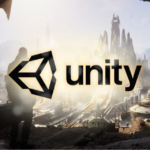In the constantly evolving digital world, game programming plays a crucial role as it opens the door to colorful and magical virtual worlds. It goes beyond just building entertaining games, it is about creating unique experiences and connecting people through the screen. Let’s explore the fascinating world of game programming together with FPT Shop, where every line of code is a magic spell and every idea is a door to unlimited space.
Self-learning roadmap for game programming
Here are the important stages in the self-learning roadmap:
Design Stage
Tips
Translating your ideas from your mind onto paper can be challenging, but it is also an opportunity to create a clear and engaging narrative about your game. Here are some suggestions to enhance and make your note-taking more complete:
Character Design:
- Describe the main characters and other characters in your game. This includes appearance, personality, and their role in the storyline.
- Identify special skills or distinctive abilities that each character brings to the game.
/fptshop.com.vn/uploads/images/tin-tuc/175271/Originals/lap-trinh-game-1.jpg)
World Building:
- Describe the world where the game takes place. This includes the environment, terrain, and any elements important to the storyline.
- If there are important countries, territories, or cities, identify and describe them.
Gameplay Mechanics:
- Detail how players will interact with the game, from how they move and interact with the environment to how they use skills or weapons.
- If there are rewards, levels, or a progression system, describe them.
Visual and Audio Elements:
- For the art style you want to use in the game, it can be pixel art, modern 3D, or any other style.
- Describe the integrated sounds, including music, sound effects, and voiceovers if any.
User Interface:
- Describe the user interface that will appear on the screen, including menus, function buttons, and any information important to the player.
Marketing and Market Goals:
- Identify the target audience for the game and how you will approach them.
- If there are marketing or promotional plans, describe them specifically to support the game’s success.
Participate in events such as game hackathons or game jams to experience the vibrant atmosphere and challenges of game development within a short period of time. Along with other participants, you will be assigned the task of creating a game and receive support from the gaming community.
In addition, participating in Ludum Dare is one of the largest events in this field to experience new and exciting things. One of the best ways to prepare for such events is to maintain a list of ideas, where you can record your creative ideas. This helps you have an abundant source of inspiration when needed and creates an idea repository for reference when you feel uninspired.
/fptshop.com.vn/uploads/images/tin-tuc/175271/Originals/lap-trinh-game-9.jpg)
When a new idea comes to mind, pause your current work and immediately record that idea. This ensures that you do not miss the sudden burst of creativity that your mind brings. From there, it creates excitement and passion, and you will develop not only the game but also your skills and creativity.
Resources
In the game design process, using resources is essential to create attractive graphics and sounds for players. Here are some common types of resources used in the game design phase:
Images and Graphics:
- Sprites: Small images often used for objects, characters, and effects in the game.
- Backgrounds: Large images or textures used as the background for scenes in the game.
- Concept Art: Initial drawings of characters, landscapes, and design elements to support the development process.
Sound and Music:
- Sound Effects: Short sound effects used for actions, events, and interactions in the game.
- Background Music: Theme music or background music to create a sense of atmosphere and enhance player interaction.
/fptshop.com.vn/uploads/images/tin-tuc/175271/Originals/lap-trinh-game-3.jpg)
3D Models and Animation:
- 3D Models: Used for characters, objects, and environments to create a 3D space in the game.
- Animations: Sequences of images or 3D models arranged to create movement for characters and objects.
Fonts and Textures:
- Fonts: Choosing suitable fonts for the style and theme of the game to display text.
- Textures: Images applied to surfaces to create detail and impressive graphics.
Script Files and Data:
- Script Files: Programming source files to build game logic and behavior.
- Game Data: Data such as databases, configuration files, and other data files to manage information in the game.
Utility Resources:
- Icons and Buttons: Small images and icons used for buttons, control icons.
- Loading Screens and Splash Screens: Images displayed when the game is loading or starting up.
Effects and Shaders:
- Particle Effects: Used to create effects such as rain, fire, steam, etc.
- Shaders: Used to optimize graphics, lighting, and other special effects.
Using these resources creatively and appropriately helps create an attractive game, providing the best experience for players.
To Do:
- Google Drive.
- GitHub () You need git and Unity .gitignore.
- Unity Collab. Easiest among the three, but the free version has many limitations.
Game design:
- The Art of Game Design by Jesse Schell.
- Gamasutra.
Art Stage
Tips
Planning helps give you an overview of the game, and then you can start implementing specific parts of the game. Here are some steps to consider:
/fptshop.com.vn/uploads/images/tin-tuc/175271/Originals/lap-trinh-game-4.jpg)
Code first (If you know):
- If you have programming skills, start with writing the source code is an important step. Choose the programming language and framework that is suitable for your skill level and game requirements.
Drawing and Graphic Design:
- If you don’t know how to program, you can start with drawing and graphic design. Use graphic design tools such as Photoshop, Illustrator, or even free online tools like GIMP.
- Focus on color, shape, and space to create visually appealing graphic elements.
Basic Image Principles:
- Color: Choose colors that suit the theme and feel of the game.
- Shape: Ensure that the shapes of objects, characters, and environment reflect your style and dedication.
- Space: Adjust the spacing between elements to create a sense of balance and efficiency in the game.
Continuous Testing and Evaluation:
- Regularly test and evaluate your progress. This helps you to quickly detect and fix issues, as well as adjust the direction of the game based on feedback.
Learning and Improving:
- Pay attention to how players interact with the game and learn from their experience.
- Explore ways to improve your game based on feedback and the market.
UI
/fptshop.com.vn/uploads/images/tin-tuc/175271/Originals/lap-trinh-game-5.jpg)
During the game development process, user interface art (UI Art) plays an important role in creating visually appealing and interactive experiences for players. When planning for UI, it is important to determine the style and theme of the game, making the UI harmonious with the overall design.
User interaction also requires adaptability from UI Art, with effects and animations that make the interface lively. Using icons as a means of conveying information, along with background components and rounded corners to highlight key elements. Gentle lighting effects and movements can enhance the player experience, creating a dynamic and engaging UI.
Organizing and arranging UI Art in an organized manner, along with testing and user interaction, ensures that the interface is not only visually pleasing but also meets the needs of the player.
Misc
In the creative process, whether it’s character design, backgrounds, or interface elements of the game, do not hesitate to embrace imperfection. Sometimes, the quirks and distinctive points in your work can add depth and appeal to your game.
Perfectionism can be an obstacle to creativity. Allow yourself to experiment, make mistakes, and learn from them. Sometimes, small gaps and imperfections can create standout and charming features in your work.
2D Animation
To perform animation in game programming, there are two main methods mentioned here: using a sprite sheet with TexturePacker (or Sprite Packer in Unity) and using a bone-based method. Specifically, using bones or the Anima2D plugin if you are working in the Unity environment.
/fptshop.com.vn/uploads/images/tin-tuc/175271/Originals/lap-trinh-game-6.jpg)
Sprite Sheet and TexturePacker:
Advantages:
- This method requires you to draw each frame of the animation and then arrange them into a sprite sheet, usually created using tools like TexturePacker.
- If you are doing 2D and using Unity, you can use the built-in Sprite Packer in Unity to manage sprite sheets.
Disadvantages:
- Requires many drawing and arranging images, especially for complex animations.
- Increase memory usage if there are a large number of images.
Bone-based and Anima2D (Unity):
Advantages:
- Using bone-based animation allows you to draw the individual moving parts of an object and then animate their positions.
- Better performance, especially for complex animations, and memory-saving.
- Anima2D is a powerful plugin for Unity that supports creating and managing bone-based animations within the Unity environment.
Disadvantages:
- Requires time to learn and become familiar with using bone systems and animation management tools.
Depending on individual preferences, you can choose one of the above methods. Sprite sheets are suitable for simple animations and objects with fewer moving parts. Bone-based animation is suitable for complex animations and objects with many moving parts.
Resources
Resources are essential in the field of art as they help create attractive graphics and engaging sounds for players. Here are some basic resources:
Creating beautiful UI:
- Google Material Design ().
- Apple’s UI Do’s and Don’ts.
Creating 2D assets:
- Photoshop ().
- Gimp.
- Paint Tool SAI. If you prefer a smooth/anime style.
Creating 3D assets:
- Blender (). Extremely powerful but difficult to learn.
- Maya. Good for animation.
- Max. Good for rendering.
Free assets:
- Behance (). Fonts + icons + other designs.
- KennyNL. HQ, UI/2D/3D art.
- Open Game Dev Art. A large library of art resources from users.
Inspiration:
- Dribbble. Designs from designers.
- Behance (). Designs from anyone.
- itch.io (). Great indie games.
Code Stage
To start developing a game, the first step is to decide on the game engine and integrated development environment (IDE). This determines the technological foundation and working environment for the project. Carefully choose between game engines such as Unity, Unreal Engine, Godot, and IDEs such as Visual Studio, Visual Studio Code to ensure compatibility with your needs and programming skills.
Data Types and Variables
/fptshop.com.vn/uploads/images/tin-tuc/175271/Originals/lap-trinh-game-8.jpeg)
Data Types:
Data Types are the attributes that data can have. Each data type defines the type of value that a variable can store and determines the operations that can be performed on that value.
- A variable is a storage area in memory that is named and associated with a specific data type. Variables are used to store and modify the value of data during program execution.
- When declaring a variable, you need to specify its name and data type.
If Statement
The “if” statement is an important component in programming, allowing you to test a specific condition and perform corresponding actions based on



































